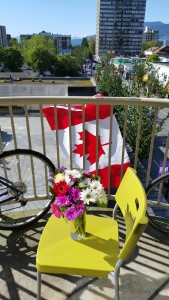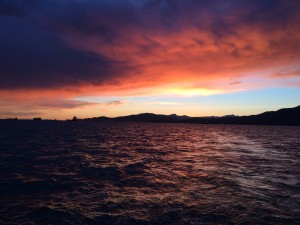This Pacific Northwest adventure began after arriving in Seattle, Washington with many bikes and luggage in tow. There, we toured premier architectural offices such as Miller Hull, Mithun, and Olson Kundig. We also toured the workshops of Turner Exhibits, who specializes in custom fabrication, kinetic architecture, and permanent exhibits. The designers at TE would later review our kinetic architecture studio work, offering the program their seasoned expertise and insight. All this in preparation for our destination and home for the next 11 weeks, none other than the dense, diverse, and beautiful city of Vancouver, British Columbia.
Such as in Portland or Seattle, Vancouver, BC is a prime cultural and economic metropolis that embodies the principles of Pacific Northwest regionalism. Specifically, strengthening its connection to its sublime setting by preserving natural vistas along corridors, valuing its environmentalism with the rehabilitation of native ecologies, and valuing its regional artistry and craftsmanship that is manifest in its urban life culture. Nature surrounds and defines this city with mountains setting the backdrop, while ocean waves set the soundtrack.
Situated within the thriving West End neighborhood, our hotel balcony view gazes at the city below, with it’s typical “tower and podium” buildings scattered in between single or two-story mixed-use commercial and residential typologies. At dusk, the sky ignites in dramatically warm sunset spectrums, giving the nearby beach goers an evening spectacle worth a thousand words. While some nights are full of skyline photo opps, most will be spent imagining creative solutions for the two design studios we have undertaken for this spring term.
Our main studio space and digital media lab were hosted generously by the Emily Carr University of Art and Design. ECUAD itself is located a quick bike ride or water taxi across False Creek on Granville Island, a famous case study of industrial manufacturing area turned into a hotspot for tourism, cultural arts, and creative industries. Granville Island is also the key focus of our urban studio project, which would first identify potential program, explore massing concepts, investigate structure and light, and finally refine tectonics into a comprehensive aesthetic that is representative of its place and time.
Coupled with the main design studio, we explored the application for kinetic architecture with a second studio project, divided into small groups. In order to design and engineer working mock-ups, we needed a crash course in a few software programs unconventional to the typical architectural education: Solidworks and MODO. These programs allowed us to quickly 3D-model parts into assemblies, and animate the results, giving life to our kinetic creations. This exploration was helpful to bridge the divide between architecture and engineering, while experimenting with the possibilities of architectural visualization.
Beyond the fast and furious workload this program demanded, there were several respites with a more recreational form of education. Curling, skating, and kayaking, to name a few. We also had more professional events by visiting a premier Vancouver design firm, Michael Green Architecture. But my ultimate favorite was the guided bike tour around the Vancouver waterfront by one of Vancouver’s senior urban designers, Scot Hein. It was very inspiring and memorable zipping from one urban design precedent to the next along the city’s extensive bike lane infrastructure, gaining first-hand insight of the challenges and successes to each project.
Coming out of this program, I am emboldened with a passion for urban design and wanderlust. I have learned to look around, ask “why?” and “how do we respond to future development?” I have also learned the formative power of travel and witnessing the world in shaping my perceptions and building an experiential foundation as a designer. The history and evolution of the city was not without challenge, nor is it perfect now by any means. Vancouver is nonetheless a cherished living precedent of what nature and recreation within urban life can look like. It has captured the hearts and minds of many, including myself, and for that I am grateful.
– Nathan Korol, 2016 Spring Architecture in Vancouver



















 was not only able to participate in the program that brought me to the University of Oregon, but it has been the highlight of my graduate school career thus far.
was not only able to participate in the program that brought me to the University of Oregon, but it has been the highlight of my graduate school career thus far.
